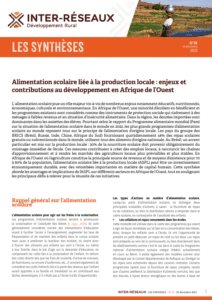This joint CTA, FAO and IFAD publication talks about how the global population is expected to increase to 9 billion by 2050, of which, 14% are youth aged between 15 – 24 years. While the world’s youth population will grow significantly, employment and entrepreneurial opportunities for youth, especially those living in developing countries’ rural areas – remain limited, poorly remunerated and of poor quality. Some of the major challenges faced are: limited access to land; inadequate access to financial services; insufficient access to knowledge; information and education; difficulties in accessing green jobs; limited access to markets; and limited involvement in policy dialogue. Nevertheless, some young people see a future for themselves in agriculture or rural areas.
Each of six key challenges indicated above have been documented, and for each of them, seven to nine cases studies illustrate how they can be addressed. Analyses of the experiences, their implementation frameworks and indications on some of their results have been provided. Additional experiences have been indicated in the conclusions of each chapter. A number of the case studies carry innovations that have strong potentials to strengthen the engagement of youths and family farmers in agricultural value chains, enhance global food security and youth livelihoods.
Many of the initiatives reported in the publication originate with the young people themselves. They show that – when there is a supportive environment – youth are able to find innovative ways to create a future for themselves, and also contribute to the societies and communities in which they live.
Download the publication (129p, 3Mo) : http://www.ifad.org/english/youth/publications/cta_fao_ifad_pub.pdf







